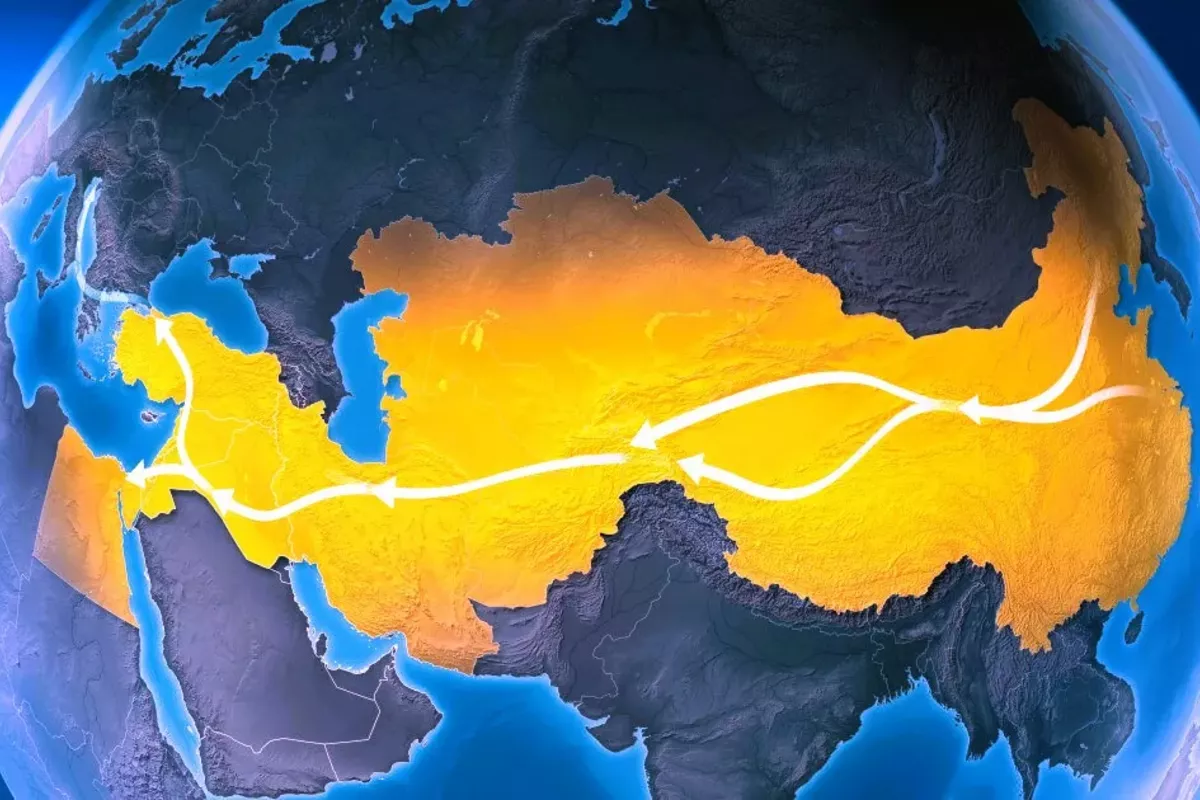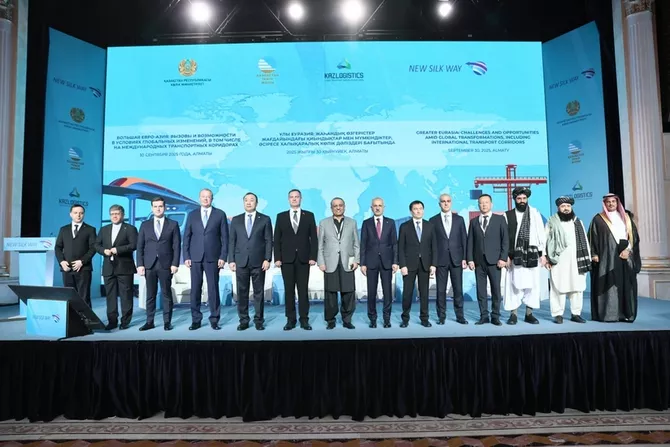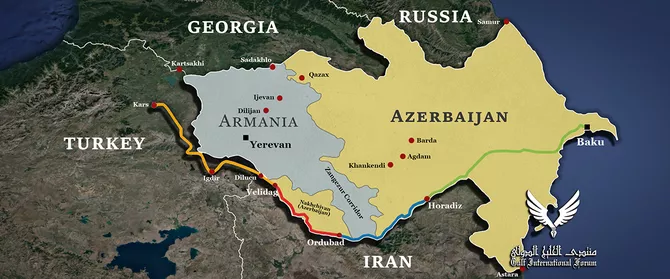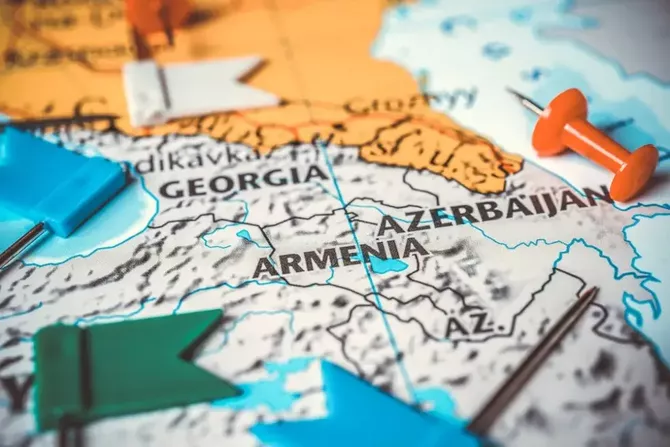
Photo credit: bakuresearchinstitute.org
The first day of October 2025 marked more than just another transport ministers’ meeting in Almaty - it symbolized the deepening of a geopolitical and economic realignment across Eurasia.
The 8th Meeting of Transport Ministers of the Organization of Turkic States (OTS), held within the framework of the 7th International Transport and Logistics Business Forum New Silk Way, once again placed the Trans-Caspian International Transport Route (TITR), better known as the Middle Corridor, at the heart of the discussion.

7th International Transport and Logistics Business Forum New Silk Road/Photo: Report
Far from being a mere infrastructure initiative, the Middle Corridor today stands as a powerful symbol of how the Turkic world is reimagining its role in the global economy. As Kazakhstan’s Ministry of Transport emphasized, the route has become a vital component of the regional logistics architecture - enhancing interconnectivity and boosting the competitiveness of transport corridors that link East and West.
The Almaty meeting focused not only on physical infrastructure but also on the digital future of transport. Ministers reaffirmed their commitment to accelerating the adoption of electronic transit procedures such as e-Permit, e-TIR, and e-CMR, paving the way for a fully digitalized system of cross-border logistics. The expansion of Caspian Sea ferry routes, the construction of new transshipment hubs, and the launch of regular block trains along the Baku-Tbilisi-Kars line also featured prominently in the agenda. These steps represent a collective effort to turn the Middle Corridor into a high-efficiency, high-trust route connecting Asia and Europe.
In essence, the meeting reaffirmed a broader geopolitical trend: regionalization through stronger economic and infrastructural linkages. Strengthened connectivity among Turkic nations is no longer just a technical task - it’s a strategic mission shaping Eurasia’s future.
This was echoed at the global stage. Addressing the VI Caspian Business Forum held in New York during the 80th session of the UN General Assembly, Azerbaijani President Ilham Aliyev once again defined the Middle Corridor as a strategic project ensuring a reliable and secure link between Europe and Asia via the Caspian Sea. He described it as the shortest and most efficient route for cargo transportation between Asia and Europe, underscoring Azerbaijan’s commitment to continuous modernization, digitalization, and capacity expansion of its segment of the corridor.

Photo credit: Gulf International Forum
Over the past three years, cargo volume across the Azerbaijani section has increased by nearly 90%, while transit times have fallen dramatically. Aliyev also highlighted the importance of the so-called “Trump Route for International Peace and Prosperity” (TRIPP), widely known as the Zangezur Corridor - a prospective segment that would provide seamless connectivity between mainland Azerbaijan and Nakhchivan. Once operational, this route could emerge as one of the Middle Corridor’s most crucial arteries, further integrating Asia and Europe through the South Caucasus and transforming the region into a hub of trade and digital communications.
Meanwhile, at the sidelines of the same UN General Assembly session, Kazakh President Kassym-Jomart Tokayev - in his meeting with Cerberus Capital Management CEO Frank Bruno - pointed out that the August 2025 agreement between Azerbaijan and Armenia has further strengthened the corridor’s geopolitical and economic importance. Tokayev noted that cargo volumes along the TITR have increased sixfold over the past five years. He welcomed Cerberus’s interest in financing infrastructure within the Middle Corridor framework, recognizing the company’s global leadership in investment management. This signals growing investor confidence that the corridor is not just a regional project, but a global opportunity.

Photo credit: Alexander Lukatskiy / shutterstock.com
Türkiye’s President Recep Tayyip Erdoğan also emphasized the strategic importance of the Middle Corridor in his remarks in New York - a position long shared by Ankara as part of its vision to consolidate the Turkic transport network from the Caspian to the Mediterranean.
At the Central Asia-European Union Summit, Uzbekistan’s President Shavkat Mirziyoyev joined the call for prioritizing the development of the Middle Corridor as a critical trade artery connecting the region with European markets. Citing the lack of efficient logistics routes as a key obstacle to exporting industrial and agricultural products to the EU, Mirziyoyev proposed organizing a ministerial-level meeting under the EU’s auspices with participation of all corridor countries - a proposal that would strengthen institutional coordination across Eurasia.
Earlier in spring 2025, Azerbaijan, Kazakhstan, and Georgia held consultations within the Trans-Caspian International Transport Route International Association to synchronize logistics operations and ensure the timely delivery of containerized cargo from China to Europe. The creation of Middle Corridor Multimodal LTD - a joint venture of these three nations - was a major step toward building an integrated management structure for the corridor’s multimodal ecosystem.
All of this underlines a clear reality: the Middle Corridor has evolved into a transport route of global geopolitical significance. It is not only fostering deeper economic integration among the Turkic States but also embedding the region into global supply chains stretching from China to Europe. The ongoing modernization of infrastructure within the TITR framework is fortifying intra-regional connectivity, reducing dependency on single routes, and contributing to a more resilient and diversified Eurasian transport network.
As the Organization of Turkic States prepares for its 9th Transport Ministers’ Meeting in 2026, to be hosted by Kyrgyzstan, one thing is increasingly clear - the Middle Corridor is no longer just a vision of the future. It is the new backbone of Eurasian connectivity, a living symbol of how strategic cooperation among Turkic nations can reshape the global map of trade and transport.
Share on social media